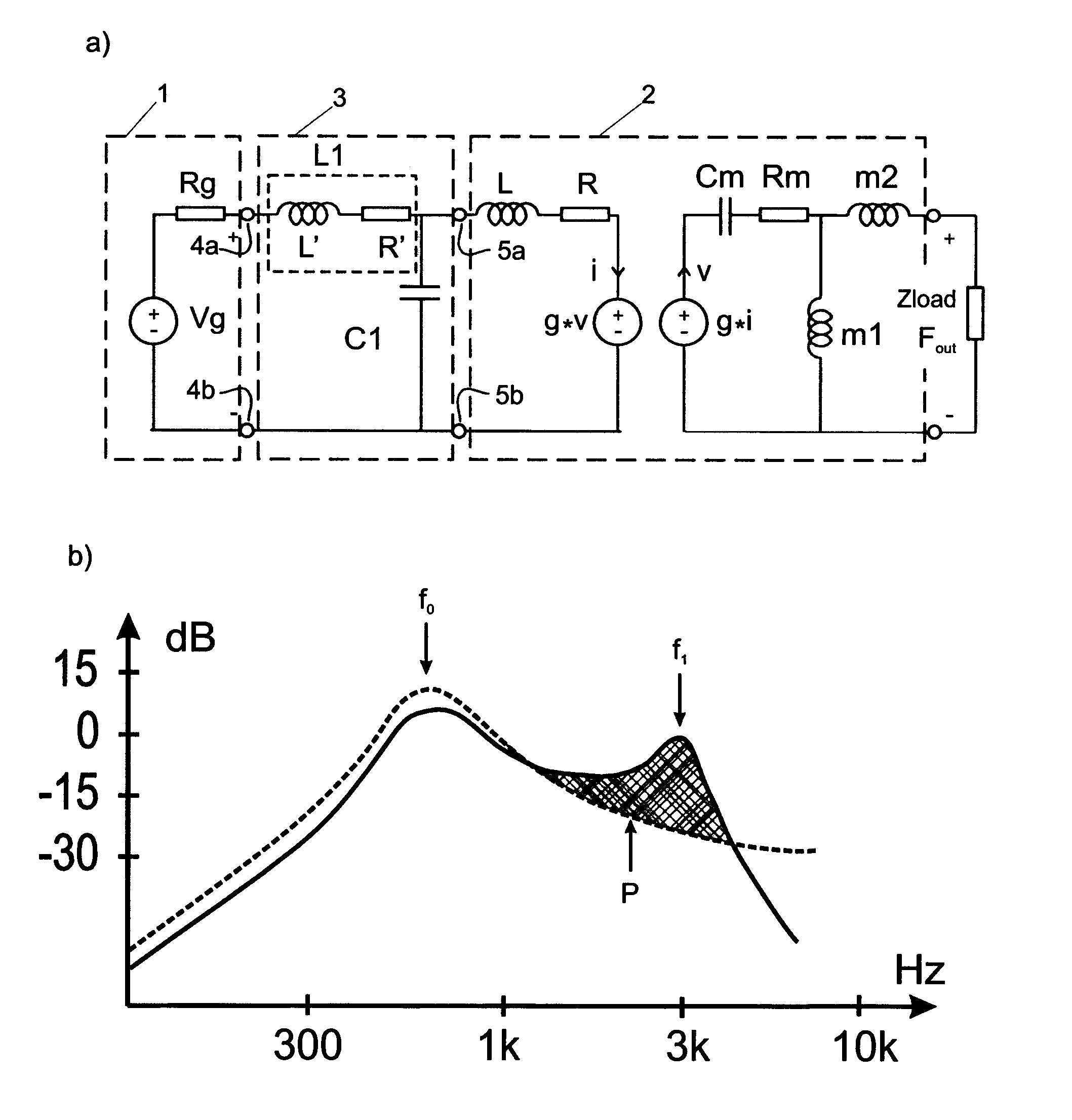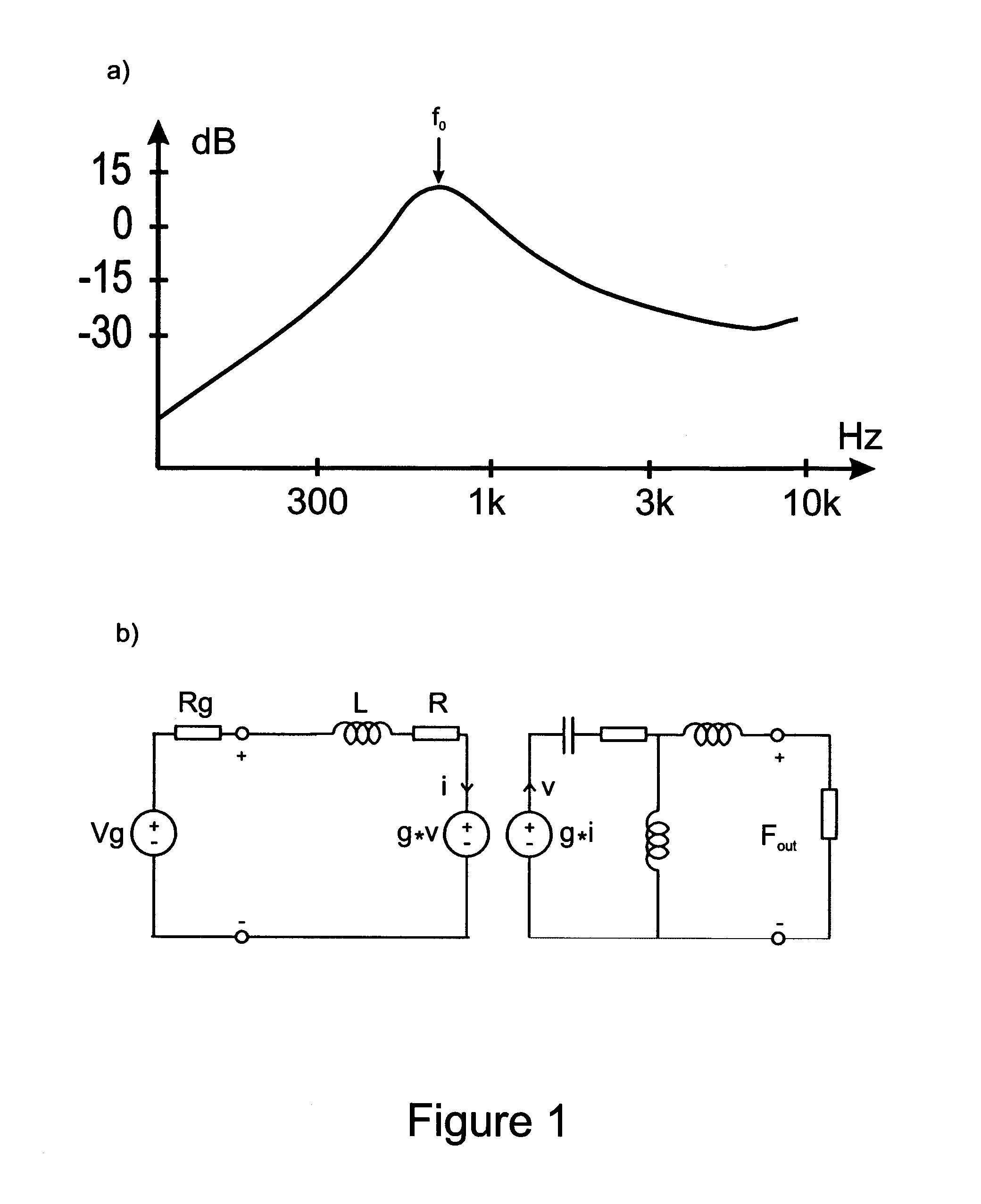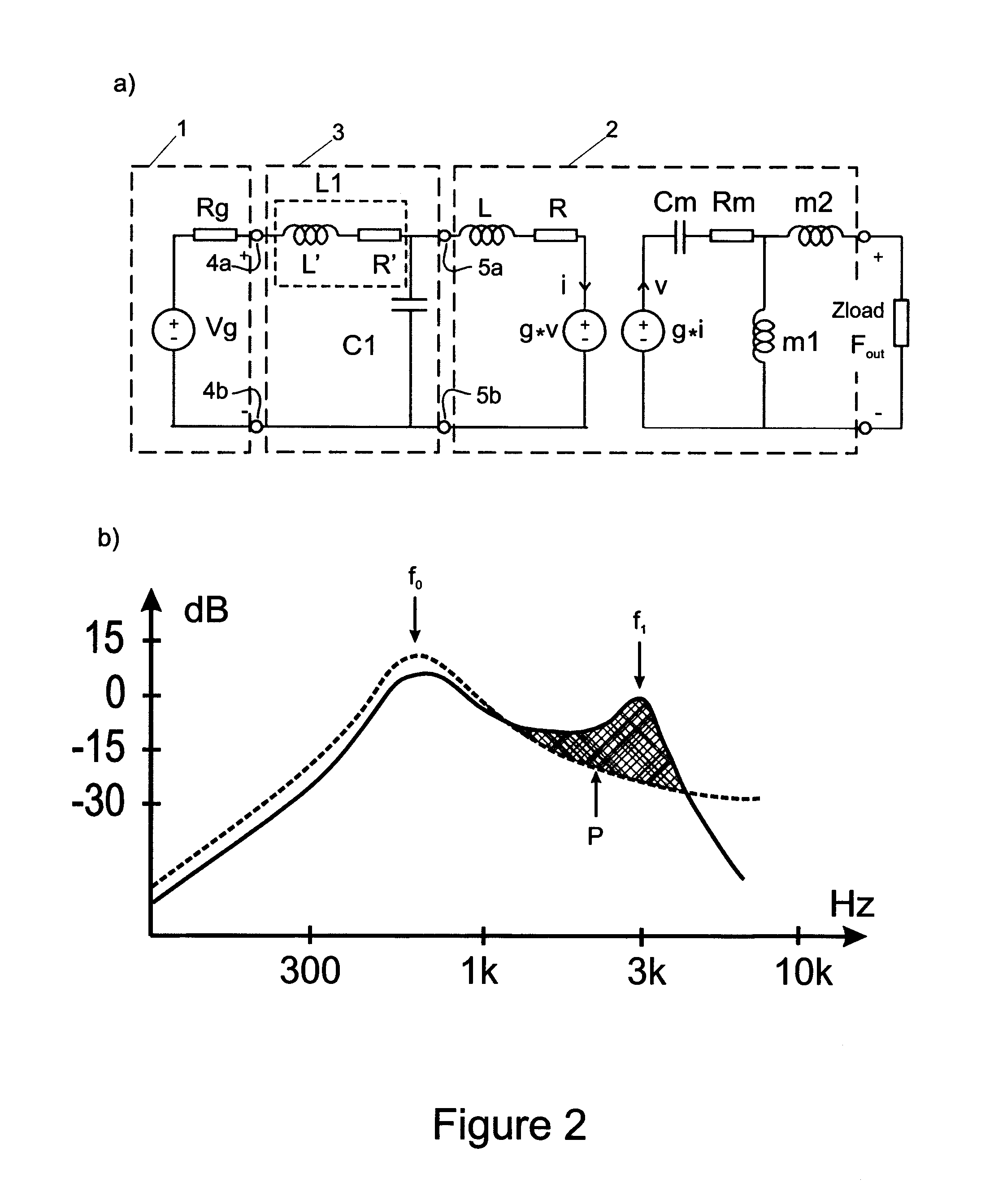Network for bone conduction transducers
a network and bone conduction technology, applied in the field of bone conduction transducer network, can solve the problems of poor input impedance, limited force output of hearing aids, poor high frequency gain in bone conduction applications, etc., and achieve the effect of increasing the force outpu
- Summary
- Abstract
- Description
- Claims
- Application Information
AI Technical Summary
Benefits of technology
Problems solved by technology
Method used
Image
Examples
Embodiment Construction
[0023]A preferred embodiment of the present invention is shown in FIG. 2. FIG. 2a, the hearing aid amplifier with output power amplifier 1 is represented by a Thévenin equivalent circuit, consisting of an ideal voltage source Vg and its output impedance Rg. The vibrator is modeled on a recognized but simplistic way (eg. by neglecting frequency-dependent losses) as an electro-mechanical analogy model 2 where the electric side of the vibrator consists of the inductance L of the coil and its ohmic losses R. The mechanical side of the vibrator consists suspension spring compliance Cm and its damping Rm while the counter weight mass m1 and the driving mass m2 couples the signal power to the mechanical load Zload. The mechanical resonance f0 formed by appropriate choice of Cm and m1 is given approximately by f0≅1 / sqrt[2π(m1*Cm)] where sqrt[ ] represents the square root operator. In this preferred embodiment an electrical network 3, comprising an inductor L1 in series with a first capacito...
PUM
 Login to View More
Login to View More Abstract
Description
Claims
Application Information
 Login to View More
Login to View More - R&D
- Intellectual Property
- Life Sciences
- Materials
- Tech Scout
- Unparalleled Data Quality
- Higher Quality Content
- 60% Fewer Hallucinations
Browse by: Latest US Patents, China's latest patents, Technical Efficacy Thesaurus, Application Domain, Technology Topic, Popular Technical Reports.
© 2025 PatSnap. All rights reserved.Legal|Privacy policy|Modern Slavery Act Transparency Statement|Sitemap|About US| Contact US: help@patsnap.com



